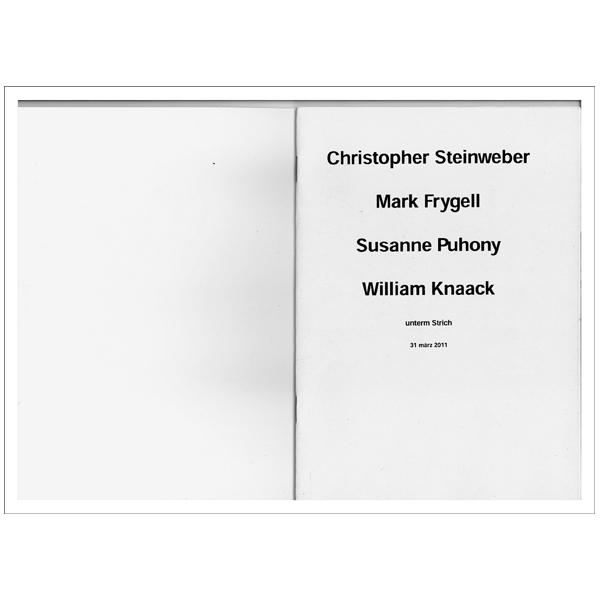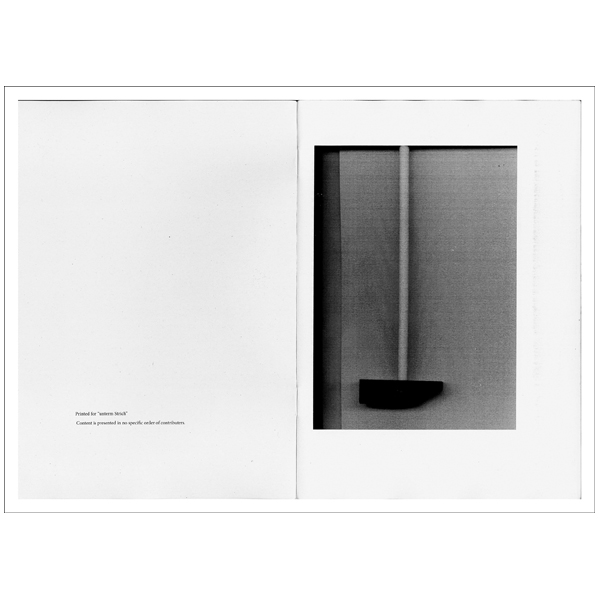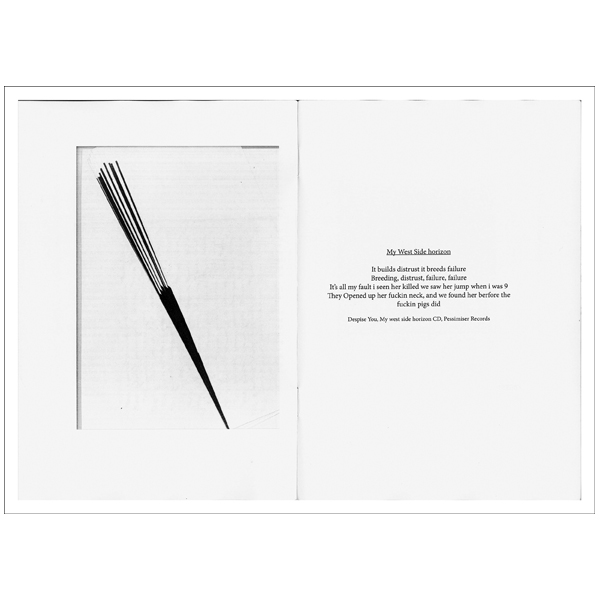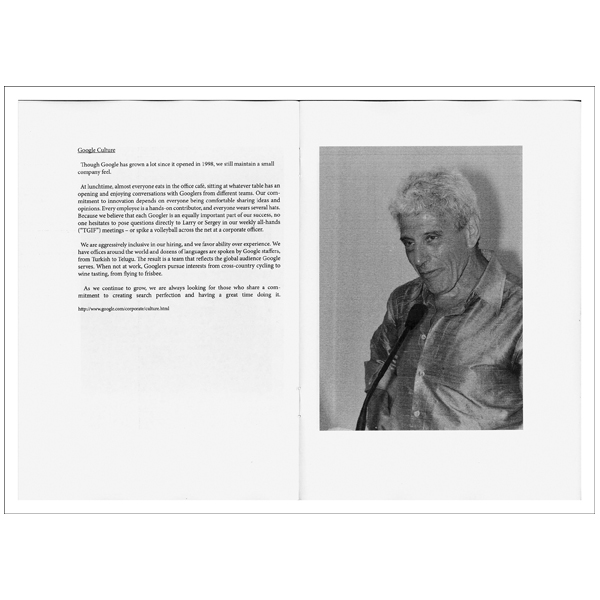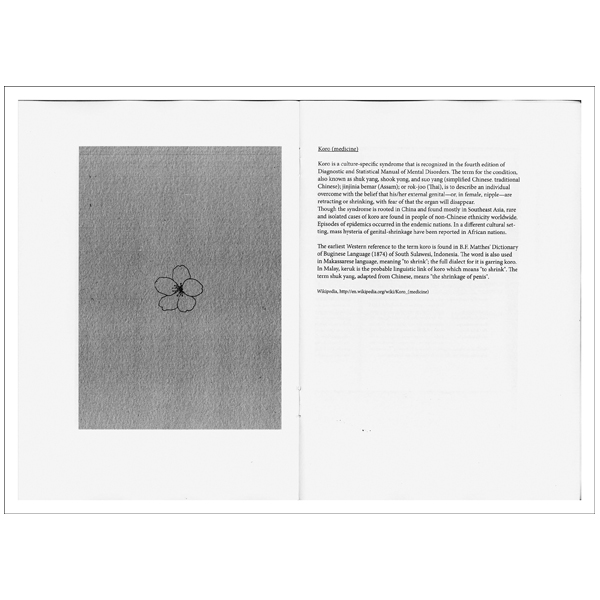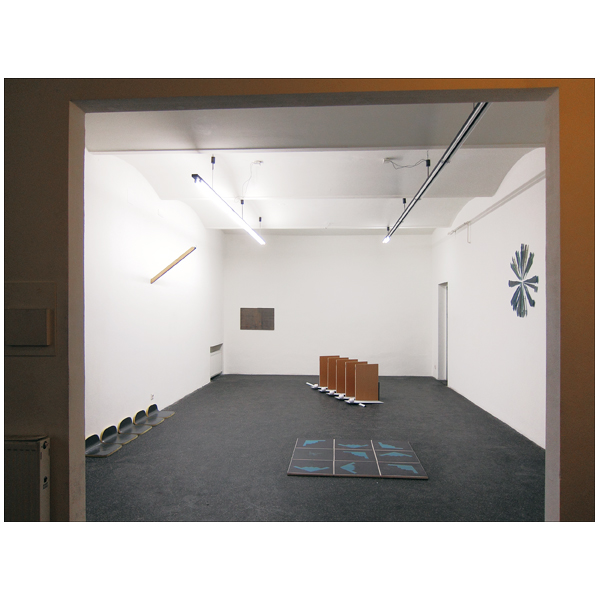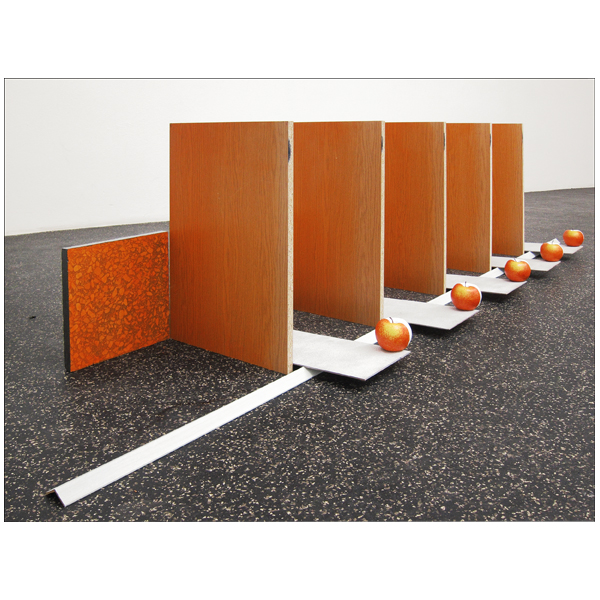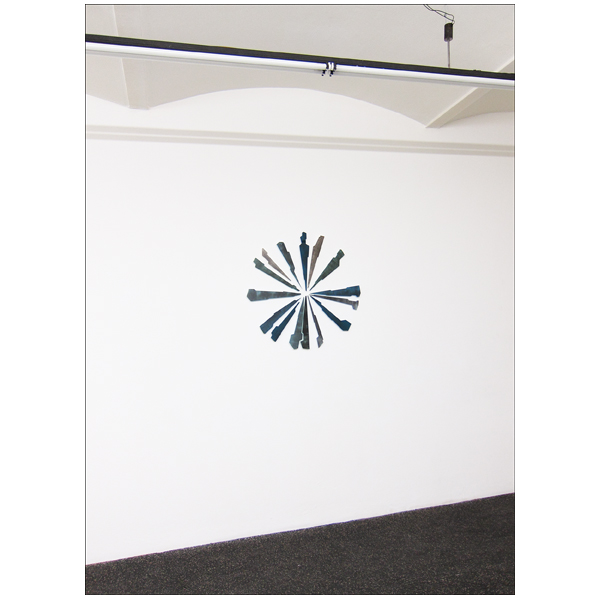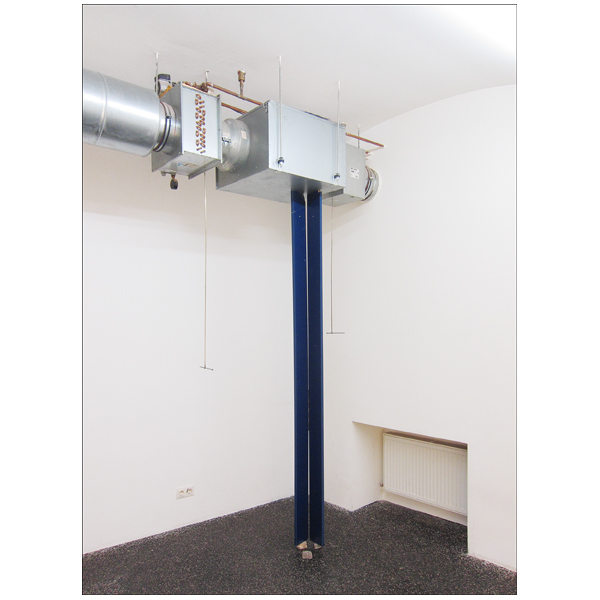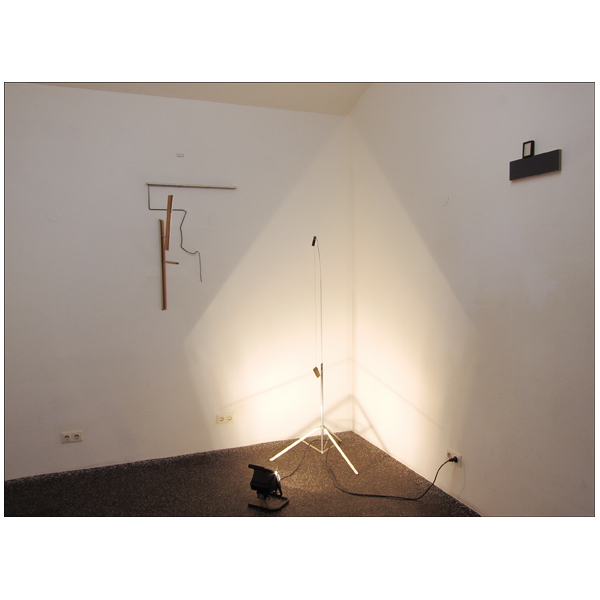* Ausstellung Studierender des Ordinariats Abstrakte Malerei, Erwin Bohatsch, Akademie der bildenden Künste, Wien
Luisa Kasalicky, Künstlerin, ist Assistentin des Ordinariats für Abstrakte Malerei, Erwin Bohatsch,
an der Akademie der bildenden Künste, Wien
3.) William Knaack, „Untitled“, 2011, plexiglas; 4&5.) Susanne Puhony, installation views
I try to switch between different kinds of crafts. I could get this original, very mundane object, something you see every day and then try to find out, why this is interesting, and build a new object out of it. So, it is very personal and reflective.
Yes, and then I start to connect it with different texts, ideas or other material and the work starts to take form. I mean, the way I start is always very banal, simple, and then gradually becomes more serious as I work with it.
No. I mean I do not want to close down my work and connect it too much to ways of thinking
or ways of looking at objects. It has an intellectual process behind it, but it is not important that you “get it”. I want to keep it open to different people from different structures.
I started as a tattoo apprentice but needed to improve my drawing so I entered a preparatory art school, and after one year
I drifted towards fine art. It was something you could find something in a different way. It was more open and felt more interesting. So, this would be my fourth year doing fine art, but I have a background in the punk-scene, where you are encouraged to be creative and no one cares if you suck. So I have been working creatively since I was quite young playing music, doing fanzines, drawing record covers and so on.
Yeah, if I, for example, figure out a painting I want to do I would make 10 out of them. I find it hard to describe but every painting after the first one is at one point a copy but on the other hand a new painting. It can never be completely the same.
It is also this thing of creating an object.
For example this work with the stone panels I did. I found these stone panels and it made no sense for me to make separate paintings on the same kind of stone. I wanted to make “this” stone
painted many times in the same way. Something like the object becomes a new object that also exists in many copies.
Hm, I’m quite used to describing my work by describing how it was made. For me this is the easiest way.
Yes, I think so. Also, when you are so used to see duplicates, these factory made objects,
it becomes a play with this at some level. There is something rewarding in working like a machine but when I do it as a human being it becomes different.
I am working on many different works now, but don’t know what I will use. I usually try to keep many different works going and plan a lot in advance what problems could arise, and after I have worked some on each one of them I know which ones that
I will invest my full time in and which ones who are works to be able to create what I consider to be the “artwork”.
Ha ha, yes.
Erzählungen von Dingen möglich zu machen, die nicht denkbar sind?
Kaum glaubt man, einen Ansatzpunkt zu fassen, entzieht er sich wieder.
Da setzt die Arbeit ein, ist auch nur kurz da, und dann auch gleich wieder weg. Ich möchte Anfang
und Ende weglassen und dadurch alles beweglich halten. Der Raum hingegen bleibt.
